Kumata: In a nutshell, AC solutions comprise the equipment, services, and systems that we offer to customers to solve their air comfort needs. Typically, a solution will incorporate apps and services to enable a certain degree of customization to match their environment.
At TIC, we develop the technologies basic to these solutions and utilize the cloud to collect and analyze the internal data of air conditioning systems to ensure efficient, safe, and continuous comfort in spaces. For example, some solutions use AI technology to reduce air conditioning downtime by analyzing variations in internal data from a long-term perspective to quickly detect refrigerant leaks and predict where malfunctions may occur.
It is estimated that air conditioning-related equipment accounts for about half of the energy consumed in a building, and we are also working to develop technologies centered on air conditioning systems to achieve carbon neutrality for the entire building. For example, we will contribute to the realization of energy-saving, safe, and secure buildings through simulation technology for heat load and air environment in buildings and cyber-physical environments. We are also developing technologies that enable us to provide whole building solutions by collecting data from building equipment (including air conditioning) and providing controllers that perform optimal control.
NEWS
AC Solutions: Discerning the Latest Information from Daikin Case Studies
FEATURE
2023.10.30
“Air conditioning solutions” is a term often heard when Daikin Industries describes its vision of providing value with air, and yet many people may not fully understand what it means.
To discover its meaning, we asked Toshiaki Kumata and Shuji Furui, two Daikin engineers who work at the Daikin Technology and Innovation Center (TIC) where state-of-the-art technologies for air conditioning are being developed, to explain what air conditioning solutions are and how they connect to the future of air.
To discover its meaning, we asked Toshiaki Kumata and Shuji Furui, two Daikin engineers who work at the Daikin Technology and Innovation Center (TIC) where state-of-the-art technologies for air conditioning are being developed, to explain what air conditioning solutions are and how they connect to the future of air.
What are "Air Conditioning Solutions" at Daikin?
―Much has been said about the benefits of Daikin’s “air conditioning solutions,” but the term itself may be a little confusing to some people. What do you mean when you say air conditioning solutions?
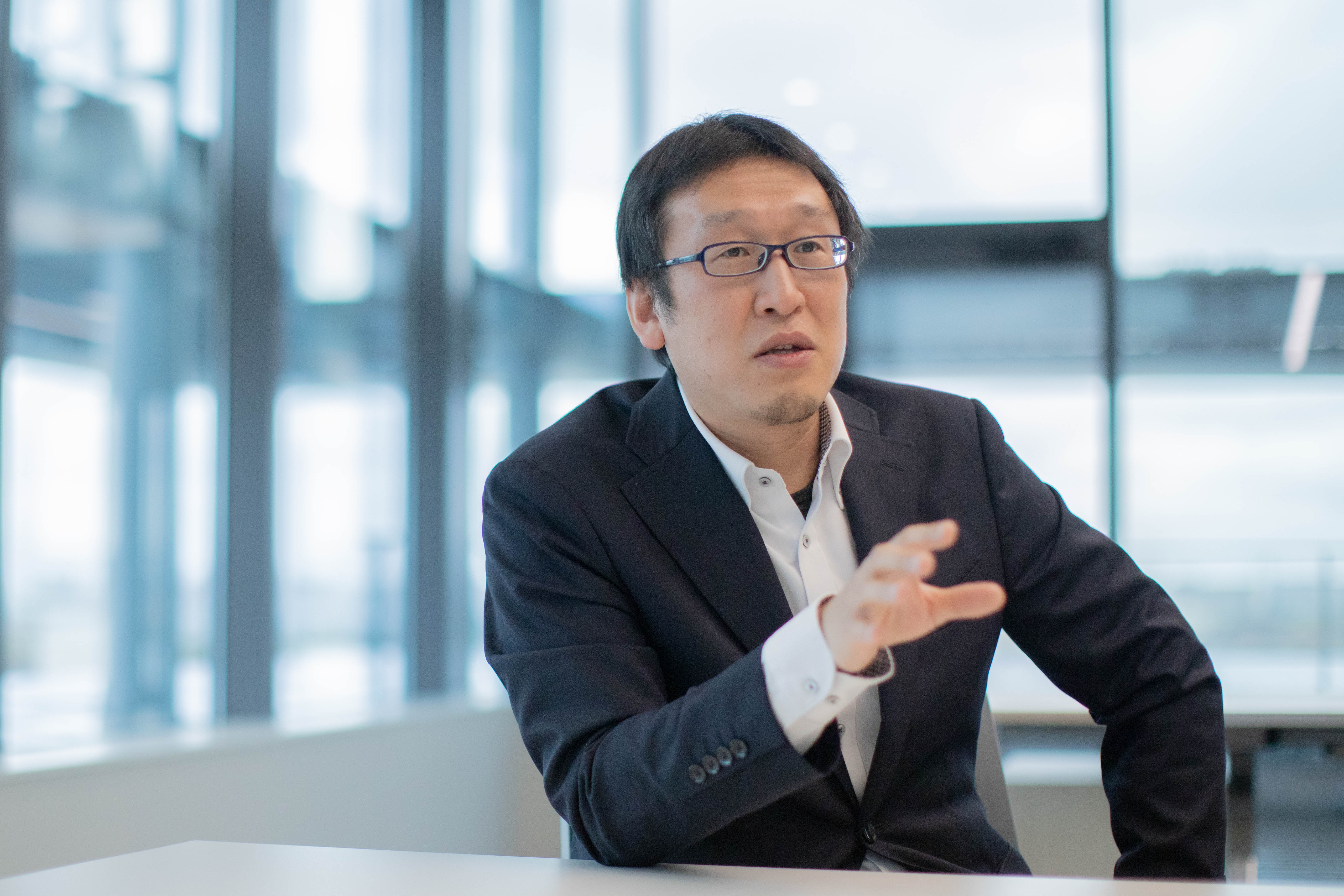
The definition of air conditioning solutions may vary from person-to-person, but to me, solutions describe how we continue to create and add value for our customers even after the sale. Rather than ending involvement after the sale, opportunities will often arise for us to solve the various issues and requests that customers have from the time of purchase to replacement.
For example, air conditioners require regular maintenance, but simply cleaning the filters correctly can save about 10% of the energy used.
Also, there are cases when a person starts using the air conditioner for the first time after many months of inactivity, and a failure occurs. If this were to happen all at once in many homes, the repair response might not meet demand. To avoid this, we contact customers to recommend that they perform a test by “running the air conditioning before the warm season begins” to check operations.
Also, many air conditioners are built to global specifications based on typical use around the world, and yet climate conditions can vary dramatically depending on region and building application. However, when air conditioners are finely tuned to match their operating environment, they can operate more efficiently without wasting energy. Similarly, the COVID-19 pandemic brought attention to "air management" and to the needs for proper ventilation and air conditioner installation to reduce the risk of airborne infections. For this reason, it has become increasingly more important for air conditioning professionals to remain in close contact with customers.
Air conditioning solutions span the entire spectrum of the air conditioning value chain from maintenance and periodic inspections of air conditioning equipment and value-added proposals during operation to renovation and replacement of entire facilities and systems, including the air conditioning system, to address customer issues. Rather than concentrating solely on sales of standalone equipment, we look toward creating customer value in what we call our koto sales business model. In this model, we integrate solutions and services with equipment as a package that precisely meets customer needs no matter the region or environment.
For example, air conditioners require regular maintenance, but simply cleaning the filters correctly can save about 10% of the energy used.
Also, there are cases when a person starts using the air conditioner for the first time after many months of inactivity, and a failure occurs. If this were to happen all at once in many homes, the repair response might not meet demand. To avoid this, we contact customers to recommend that they perform a test by “running the air conditioning before the warm season begins” to check operations.
Also, many air conditioners are built to global specifications based on typical use around the world, and yet climate conditions can vary dramatically depending on region and building application. However, when air conditioners are finely tuned to match their operating environment, they can operate more efficiently without wasting energy. Similarly, the COVID-19 pandemic brought attention to "air management" and to the needs for proper ventilation and air conditioner installation to reduce the risk of airborne infections. For this reason, it has become increasingly more important for air conditioning professionals to remain in close contact with customers.
Air conditioning solutions span the entire spectrum of the air conditioning value chain from maintenance and periodic inspections of air conditioning equipment and value-added proposals during operation to renovation and replacement of entire facilities and systems, including the air conditioning system, to address customer issues. Rather than concentrating solely on sales of standalone equipment, we look toward creating customer value in what we call our koto sales business model. In this model, we integrate solutions and services with equipment as a package that precisely meets customer needs no matter the region or environment.
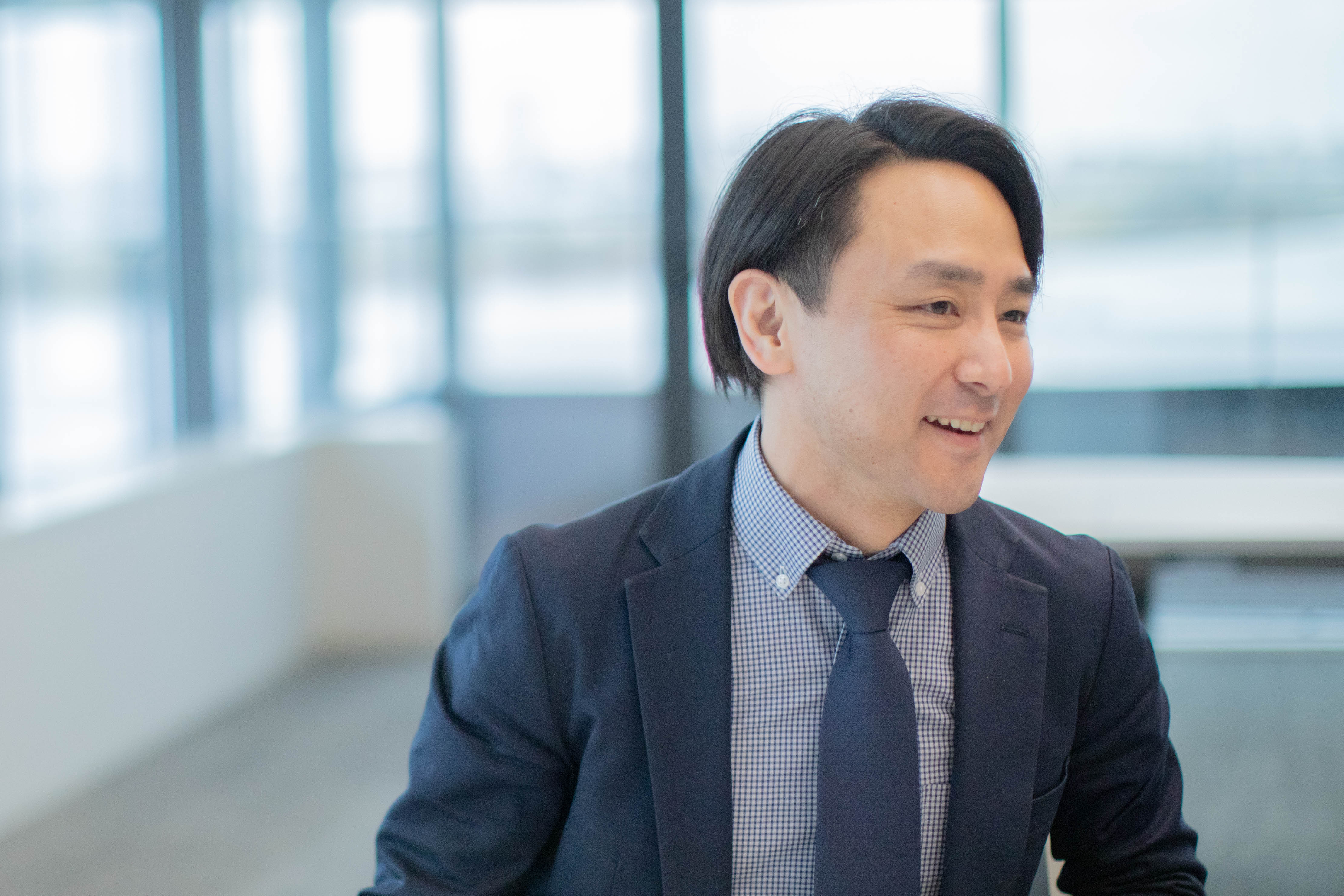
Furui: Kumata-san has done most of the talking (laughs) and not left me much to say, but I largely agree with him. Air conditioning solutions are a change in our business model.
In contrast to a business that would effectively end with the sale of an air conditioner, the solutions business exists to solve problems by continuing to connect with customers. In doing so, we hope to not only create a path for customers to continue choosing Daikin but to also utilize the data obtained from customers to provide more comfortable spaces and reduce CO2 emissions. To accomplish this, we create an air-conditioning load prediction model for each building and develop technologies that are generally referred to as cyber-physical to regulate energy use and adjust power supply and demand for the entire area while predicting the indoor environment.
In contrast to a business that would effectively end with the sale of an air conditioner, the solutions business exists to solve problems by continuing to connect with customers. In doing so, we hope to not only create a path for customers to continue choosing Daikin but to also utilize the data obtained from customers to provide more comfortable spaces and reduce CO2 emissions. To accomplish this, we create an air-conditioning load prediction model for each building and develop technologies that are generally referred to as cyber-physical to regulate energy use and adjust power supply and demand for the entire area while predicting the indoor environment.
As Kumata-san touched on, our solutions not only affect the customers who purchase and use our air conditioners, but they also impact those who design, install, transport, and maintain air conditioners. For example, some of the contractors who repair air conditioners have trouble finding and hiring young people. Our thinking is that if they introduce IoT into their operations and conduct remote inspections, they can actually reduce the number of breakdowns.
―In this way, Daikin's shift to a business model focused on air conditioning solutions is driving the realization of carbon neutrality through consulting on energy conservation and the use of IoT.
Kumata: I believe that one of the key factors necessary for air conditioning solutions is the construction of a platform for collecting and utilizing data. While Daikin has a strong image as a hardware manufacturer, we have actually been providing a service called the Air Conditioning Remote Monitoring Service that collects, manages, and controls data from air conditioners back before the term IoT even existed.This remote monitoring service began in 1993, 25 years ago, when there were only telephone lines.
The know-how and technologies accumulated through these efforts correspond to the current trend of achieving carbon neutrality. We hope to make a significant contribution to the air conditioning solutions business with a platform that leverages the know-how we have accumulated over many years.
Kumata: I believe that one of the key factors necessary for air conditioning solutions is the construction of a platform for collecting and utilizing data. While Daikin has a strong image as a hardware manufacturer, we have actually been providing a service called the Air Conditioning Remote Monitoring Service that collects, manages, and controls data from air conditioners back before the term IoT even existed.This remote monitoring service began in 1993, 25 years ago, when there were only telephone lines.
The know-how and technologies accumulated through these efforts correspond to the current trend of achieving carbon neutrality. We hope to make a significant contribution to the air conditioning solutions business with a platform that leverages the know-how we have accumulated over many years.
Daikin AC Solutions
1. Service Solutions Using Air Conditioning Equipment Data
−We would now like to follow up on the remote inspection of air conditioning equipment that Mr. Furui talked about as an example of Daikin's air conditioning solution.
Kumata: Regarding air conditioning equipment installed in buildings, periodic inspections are essential for adjusting the air conditioning of large spaces. However, these inspections have become a major part of the workload for building management companies.
For example condensation water generated by cooling and dehumidification is collected in a drain pan and drained through a hose, but regular inspection and cleaning of the drain pan is essential. Dirt and foreign matter can clog the drain pan, causing leaks and unexpected shutdowns. To visually inspect the drain pan area, the ceiling panel must be removed, and parts disassembled. Because multiple air conditioners are often installed at a building, these periodic inspections require much time and many labor hours.
Daikin has therefore made this periodic inspection IoT, and in October 2019, it began offering Kirei Watch, a remote drain pan inspection service.
A fixed-point camera is installed inside the air conditioning equipment to automatically take pictures. These images are transmitted to the cloud via a communication device installed in the equipment, and the cloud automatically analyzes the images to determine the degree of contamination.
The building management company can now use a computer or tablet to check the evaluation results and the recommended cleaning time sent from the cloud. This service has eliminated the need for periodic inspections, making it easier to determine the appropriate time for maintenance. It has also contributed to the reform of work styles by reducing the amount of labor and time required for inspections.
−In addition to reducing management and maintenance costs by collecting, analyzing, and utilizing data from air conditioning equipment in this way, Daikin also plans to collect data on temperature, humidity, CO2, and other factors and to use it the data to create a comfortable environment.
Kumata: Regarding air conditioning equipment installed in buildings, periodic inspections are essential for adjusting the air conditioning of large spaces. However, these inspections have become a major part of the workload for building management companies.
For example condensation water generated by cooling and dehumidification is collected in a drain pan and drained through a hose, but regular inspection and cleaning of the drain pan is essential. Dirt and foreign matter can clog the drain pan, causing leaks and unexpected shutdowns. To visually inspect the drain pan area, the ceiling panel must be removed, and parts disassembled. Because multiple air conditioners are often installed at a building, these periodic inspections require much time and many labor hours.
Daikin has therefore made this periodic inspection IoT, and in October 2019, it began offering Kirei Watch, a remote drain pan inspection service.
A fixed-point camera is installed inside the air conditioning equipment to automatically take pictures. These images are transmitted to the cloud via a communication device installed in the equipment, and the cloud automatically analyzes the images to determine the degree of contamination.
The building management company can now use a computer or tablet to check the evaluation results and the recommended cleaning time sent from the cloud. This service has eliminated the need for periodic inspections, making it easier to determine the appropriate time for maintenance. It has also contributed to the reform of work styles by reducing the amount of labor and time required for inspections.
−In addition to reducing management and maintenance costs by collecting, analyzing, and utilizing data from air conditioning equipment in this way, Daikin also plans to collect data on temperature, humidity, CO2, and other factors and to use it the data to create a comfortable environment.
Daikin AC Solutions
2. Energy Conservation for the Entire Building That Leads to Carbon Neutrality
−Next, we would like to introduce an air conditioning solution called "whole building optimization," which is closely related to carbon neutrality.
To briefly explain carbon neutrality again, it is an initiative to "reduce greenhouse gas emissions to net zero emissions overall." Reduction to zero emissions is expressed in the following calculation: [“Emissions” (of carbon dioxide and other greenhouse gases) - “Absorption” (the amount absorbed through afforestation and forest management, etc.) = Net zero emissions.] The Japanese government has declared that it aims to achieve carbon neutrality by 2050, and companies are taking measures to realize this goal.
Furui: We have already decided when we are going to reduce greenhouse gas emissions to net zero, and now we are investigating how we will reduce them. Each company is still in the process of searching for a way to achieve this goal.
−Previously, Mr. Furui has said that this search for ways to reach net zero will likely be the result of the accumulation of many small trial experiments rather than a few epoch-making discoveries.
Furui: One of our aims for air conditioning solutions is to connect our know-how and technology to carbon neutrality.
Because some equipment, such as elevators, are products not handled by our company, saying that Daikin manages the entire building is a slight exaggeration. Nevertheless, energy (electricity, etc.) and facility management account for the major costs of a building. Not only do we have the equipment and control systems for air conditioning and ventilation to optimize these aspects, but we also have the technologies, platforms, and know-how for lighting control, thermal barrier paint to reduce the air conditioning load, and failure diagnosis to reduce the number of labor hours required for facilities management. If each and every building becomes optimized based on data, it will lead to the realization of carbon neutrality. In fact, we are conducting a technical demonstration of demand control in an area where multiple buildings are managed together and utilize renewable energy for local production and consumption of energy for local municipalities. Based on the demonstration results, we plan to use the content of this technology as a springboard to commercialization of carbon neutrality proposals.
To briefly explain carbon neutrality again, it is an initiative to "reduce greenhouse gas emissions to net zero emissions overall." Reduction to zero emissions is expressed in the following calculation: [“Emissions” (of carbon dioxide and other greenhouse gases) - “Absorption” (the amount absorbed through afforestation and forest management, etc.) = Net zero emissions.] The Japanese government has declared that it aims to achieve carbon neutrality by 2050, and companies are taking measures to realize this goal.
Furui: We have already decided when we are going to reduce greenhouse gas emissions to net zero, and now we are investigating how we will reduce them. Each company is still in the process of searching for a way to achieve this goal.
−Previously, Mr. Furui has said that this search for ways to reach net zero will likely be the result of the accumulation of many small trial experiments rather than a few epoch-making discoveries.
Furui: One of our aims for air conditioning solutions is to connect our know-how and technology to carbon neutrality.
Because some equipment, such as elevators, are products not handled by our company, saying that Daikin manages the entire building is a slight exaggeration. Nevertheless, energy (electricity, etc.) and facility management account for the major costs of a building. Not only do we have the equipment and control systems for air conditioning and ventilation to optimize these aspects, but we also have the technologies, platforms, and know-how for lighting control, thermal barrier paint to reduce the air conditioning load, and failure diagnosis to reduce the number of labor hours required for facilities management. If each and every building becomes optimized based on data, it will lead to the realization of carbon neutrality. In fact, we are conducting a technical demonstration of demand control in an area where multiple buildings are managed together and utilize renewable energy for local production and consumption of energy for local municipalities. Based on the demonstration results, we plan to use the content of this technology as a springboard to commercialization of carbon neutrality proposals.
Daikin AC Solutions
3. DX Transformation of Air Conditioning Worksites
Kumata: In addition to air conditioning solutions that utilize data from air conditioning equipment and whole building solutions, we believe that the DX [transformation of worksites] is also an important part of air conditioning solutions for worksites when considering the air conditioning value chain.
Onsite capabilities are an extremely powerful asset for the manufacturing industry, and they are an aspect that should be strengthened. We believe that we can provide solutions through the air conditioning value chain by promoting DX transformation of onsite operations by adding the power of digital technology to Daikin Industries' strengths of onsite capabilities and human resources. In addition, as air conditioning demand increases around the world, we intend to build a service network that allows customers to use air conditioning equipment safely, securely, and comfortably in any region by leveraging IoT and AI technologies. For example, we are developing a service site support system using wearable devices and natural language processing technology. This will allow experienced engineers to provide remote support at any site that will not only enable us to install high-quality air conditioning systems, but it will also enable us to quickly solve air conditioner problems for customers.
−Both Mr. Kumata and Mr. Furui are also involved in hiring to find and develop human resources to create new air conditioning solutions.
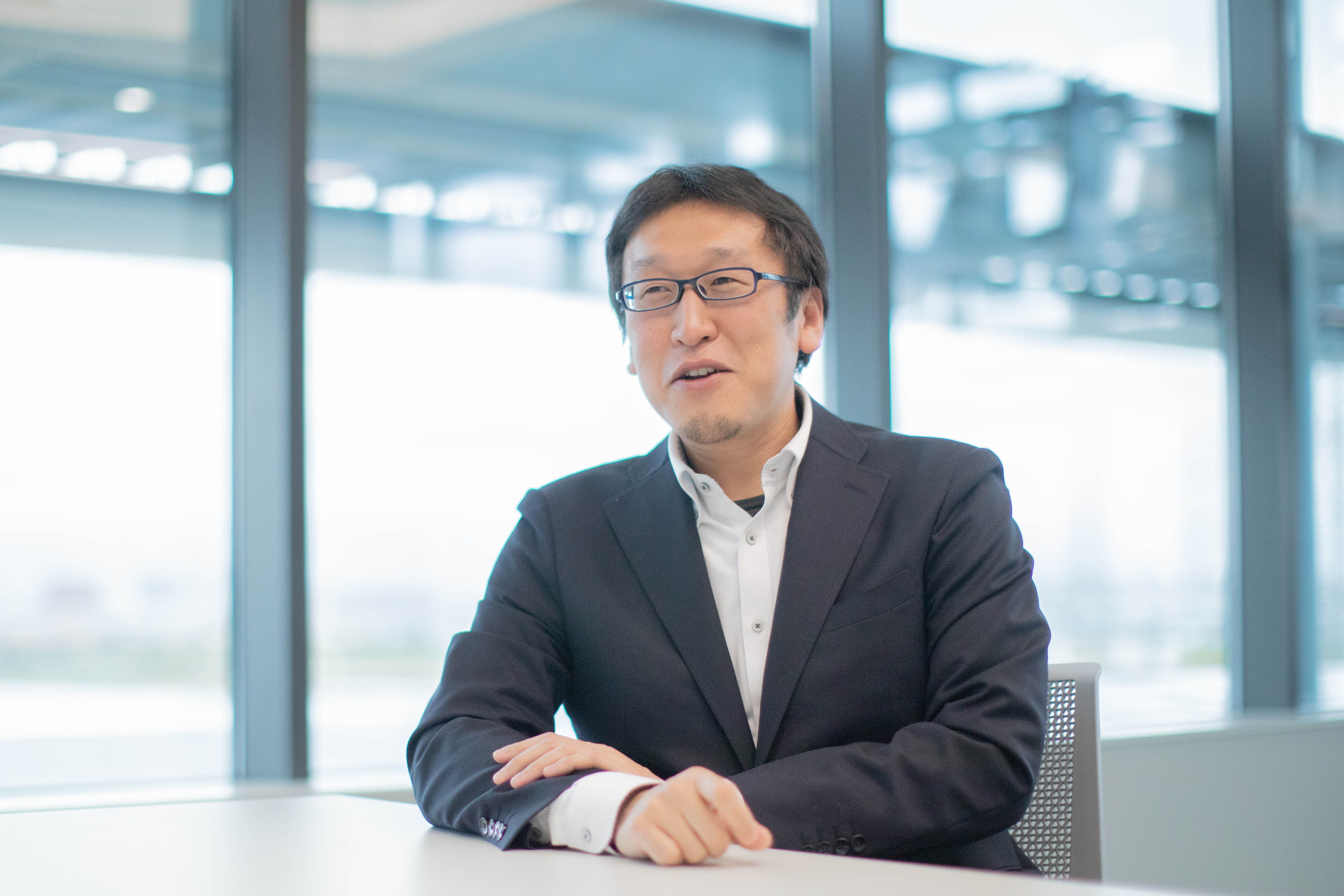
Onsite capabilities are an extremely powerful asset for the manufacturing industry, and they are an aspect that should be strengthened. We believe that we can provide solutions through the air conditioning value chain by promoting DX transformation of onsite operations by adding the power of digital technology to Daikin Industries' strengths of onsite capabilities and human resources. In addition, as air conditioning demand increases around the world, we intend to build a service network that allows customers to use air conditioning equipment safely, securely, and comfortably in any region by leveraging IoT and AI technologies. For example, we are developing a service site support system using wearable devices and natural language processing technology. This will allow experienced engineers to provide remote support at any site that will not only enable us to install high-quality air conditioning systems, but it will also enable us to quickly solve air conditioner problems for customers.
−Both Mr. Kumata and Mr. Furui are also involved in hiring to find and develop human resources to create new air conditioning solutions.

Kumata: I tell the members of my groups that I want them to become engineers who can sing, dance, and talk. Just doing research alone is not good for business, of course.
If the process of finding a problem and coming up with a solution is the process of turning 0 into 0.8, then I think we can reach 0.8 in the research phase. But it is difficult to turn 0.8 into 1.0: in other words, converting research into a business is the difficult part. I don't think this is limited to engineers. What will be required in the future is an engineer who can take it to 10, not 0.8. That type of engineer will research, plan, and sell. To this end, we visit many worksites and tell them, "Let's develop products in situations where we can clearly picture the faces of people who will be pleased by them.”
If the process of finding a problem and coming up with a solution is the process of turning 0 into 0.8, then I think we can reach 0.8 in the research phase. But it is difficult to turn 0.8 into 1.0: in other words, converting research into a business is the difficult part. I don't think this is limited to engineers. What will be required in the future is an engineer who can take it to 10, not 0.8. That type of engineer will research, plan, and sell. To this end, we visit many worksites and tell them, "Let's develop products in situations where we can clearly picture the faces of people who will be pleased by them.”
Furui: My title is chief engineer, but I increasingly go on site to get a feel for who is having problems in the real world and what kind of problems they are having. That is the beginning of air conditioning solutions.
To make it a “10,” I go on site, discover the issues of those in need, come up with a solution, and communicate that solution. When there is no internal structure or process to implement the solution, I will involve sales and service, and we will work together to come up with a solution. This is my way of developing air conditioning solutions.
−In 2017, Daikin established the Daikin Information and Communication Technology College, an in-house course to train personnel in the field of AI. A large-scale DX human resources development initiative in which approximately 100 employees take the two-year course each year under a system in which they devote themselves to studying AI and are paid a salary for two years while they learn.
The human resources who complete the course go to various worksites as "engineers who can sing and dance" to discover and solve new problems by linking data with data las Kumata and Furui do. This initiative itself is part of Daikin air conditioning solutions.
−In 2017, Daikin established the Daikin Information and Communication Technology College, an in-house course to train personnel in the field of AI. A large-scale DX human resources development initiative in which approximately 100 employees take the two-year course each year under a system in which they devote themselves to studying AI and are paid a salary for two years while they learn.
The human resources who complete the course go to various worksites as "engineers who can sing and dance" to discover and solve new problems by linking data with data las Kumata and Furui do. This initiative itself is part of Daikin air conditioning solutions.
We want to accelerate air conditioning solutions around the world
Kumata: It is said that air conditioning accounts for about 40-50% of energy consumption in office buildings. The remaining 20-30% covers lighting and electrical outlets, while about 10% is used for elevators. In other words, good energy management of air conditioning can lead to significant energy savings.
It is only an analogy, but if all the air conditioners in Europe were connected to the Internet and controlled to operate properly, we could achieve a 10% increase in energy savings. Ten percent of all Europe would mean a reduction of power equivalent to one or two nuclear power plants. Isn't this pretty amazing?
To achieve carbon neutrality as quickly as possible, I think greater speed is necessary. Wouldn’t it be fantastic if Daikin could share (open up) its know-how and technology with engineers around the world, and we could realize air conditioning solutions for each application market. What is needed for this is a mechanism to "correctly" communicate know-how and technology. Preparations, including setting rules and developing software, are needed. Not only research and development of technology, but modern engineers also need to find ways to create an environment in which they can globally unite and rapidly carry out development necessary for air conditioning solutions, and I would like to realize this as soon as possible.
To achieve carbon neutrality as quickly as possible, I think greater speed is necessary. Wouldn’t it be fantastic if Daikin could share (open up) its know-how and technology with engineers around the world, and we could realize air conditioning solutions for each application market. What is needed for this is a mechanism to "correctly" communicate know-how and technology. Preparations, including setting rules and developing software, are needed. Not only research and development of technology, but modern engineers also need to find ways to create an environment in which they can globally unite and rapidly carry out development necessary for air conditioning solutions, and I would like to realize this as soon as possible.
Smart City Transformation for Local Branding
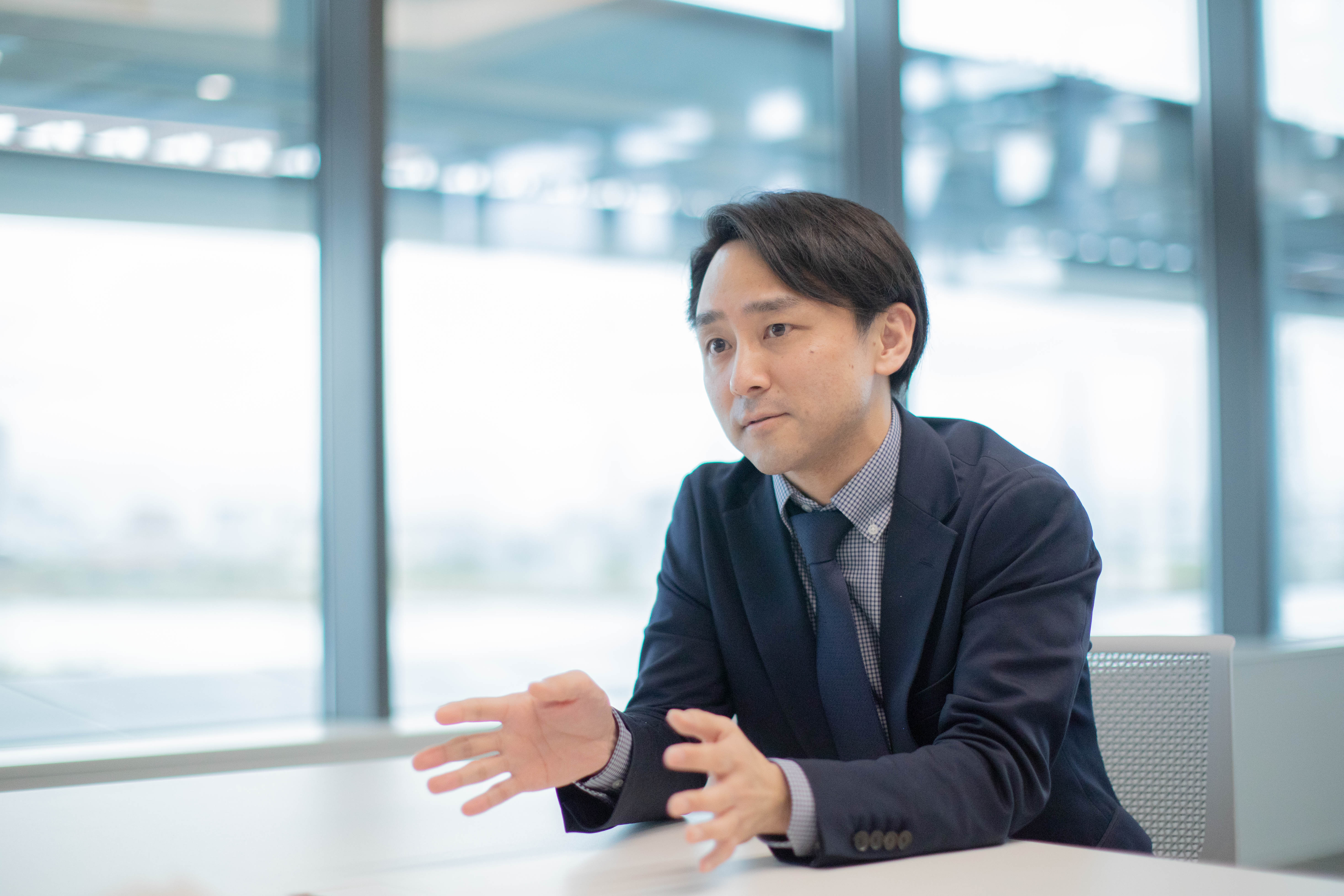
Furui: As an advanced form of "whole building optimization," we would like to realize a "smart city" that optimally manages energy for the entire city.
For smart cities, it will be important to not only improve energy efficiency, which is one of Daikin’s fortes, with a focus on carbon neutrality but also provide value to residents in terms of transportation, mobility, community revitalization, and health. For example, it will also be necessary to provide benefits to residents, such as lower energy costs, and tax incentives to municipalities that have converted to smart cities. The ideal would be residents to derive a sense of pride from living in a smart city recognized as a brand and think, “It’s nice living in this city.”
For smart cities, it will be important to not only improve energy efficiency, which is one of Daikin’s fortes, with a focus on carbon neutrality but also provide value to residents in terms of transportation, mobility, community revitalization, and health. For example, it will also be necessary to provide benefits to residents, such as lower energy costs, and tax incentives to municipalities that have converted to smart cities. The ideal would be residents to derive a sense of pride from living in a smart city recognized as a brand and think, “It’s nice living in this city.”
For example, if a municipality suffering from depopulation can reverse a decline in population and tax revenue into a positive outcome by transforming to a smart city, then that effort will not only achieve carbon neutrality through energy conservation, but it will also contribute to society.
It would be impossible for Daikin to achieve all of these things on its own. We would like to collaborate with various partners to think about how to approach national and local governments, create a system to attract customers, and communicate the value of these projects
−Daikin's air conditioning solutions will not only solve various "problems" through air conditioning, but they also will expand and create new and healthy lifestyles for as long as engineers such these continue to discover, contemplate, and work on them.
−Daikin's air conditioning solutions will not only solve various "problems" through air conditioning, but they also will expand and create new and healthy lifestyles for as long as engineers such these continue to discover, contemplate, and work on them.
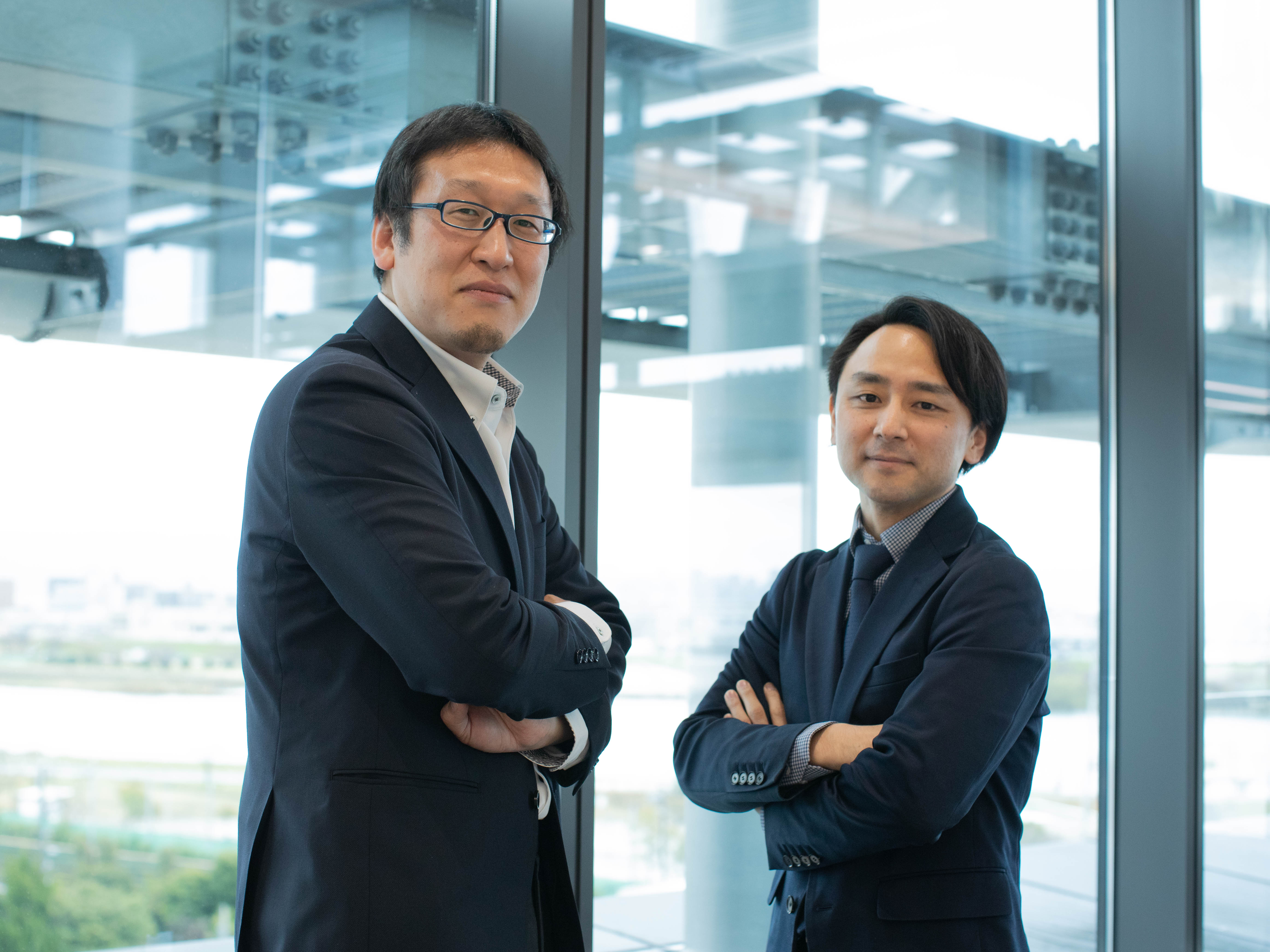
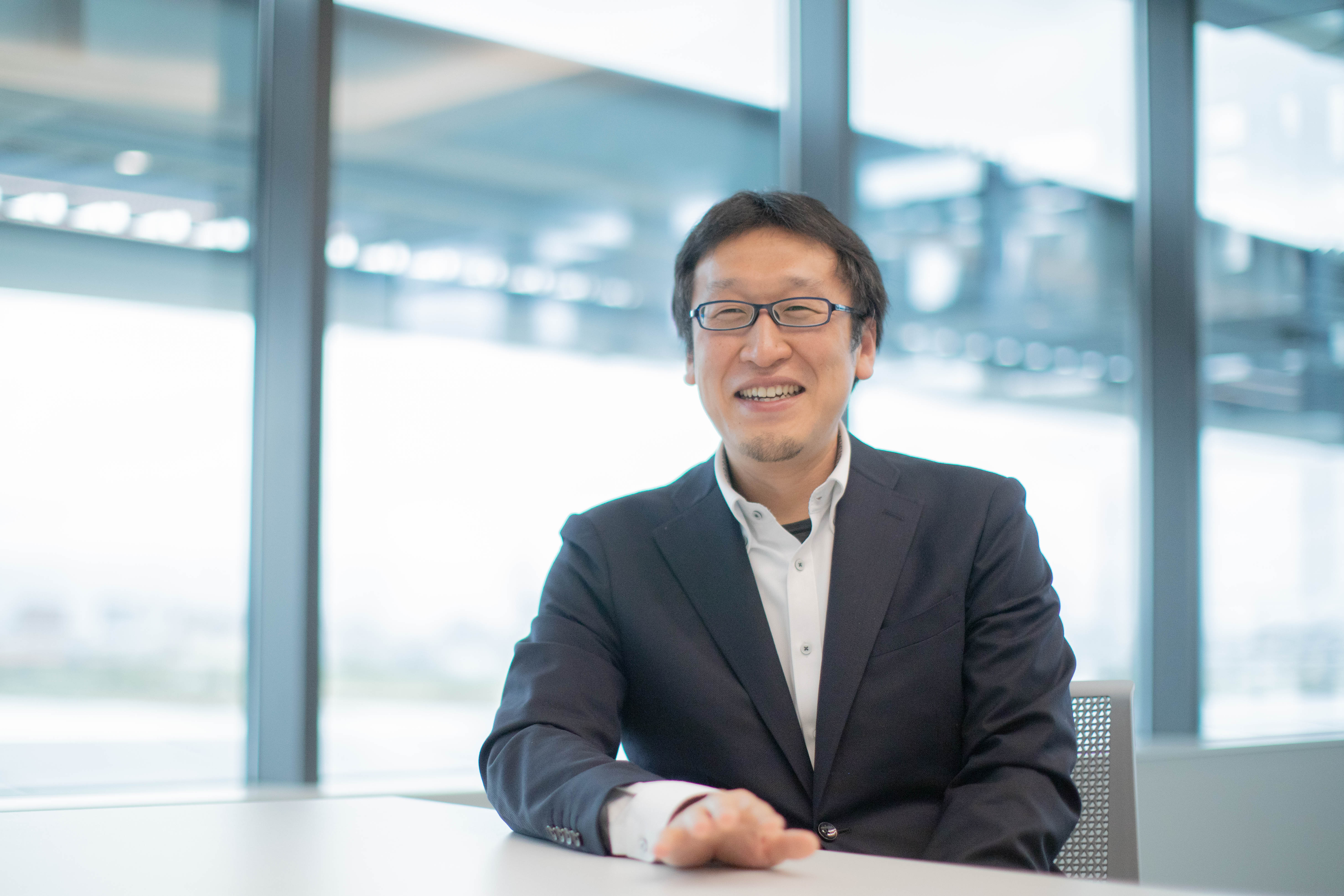
Toshiaki Kumata
Senior Engineer, Technology and Innovation Center
Born in Osaka and joined the company in April 2006. He is in charge of software development for solutions business utilizing IoT and AI technologies.
In addition to software for manufacturing, we are also taking on the challenge of developing systems and creating mechanisms for software to play a leading role.
Senior Engineer, Technology and Innovation Center
Born in Osaka and joined the company in April 2006. He is in charge of software development for solutions business utilizing IoT and AI technologies.
In addition to software for manufacturing, we are also taking on the challenge of developing systems and creating mechanisms for software to play a leading role.
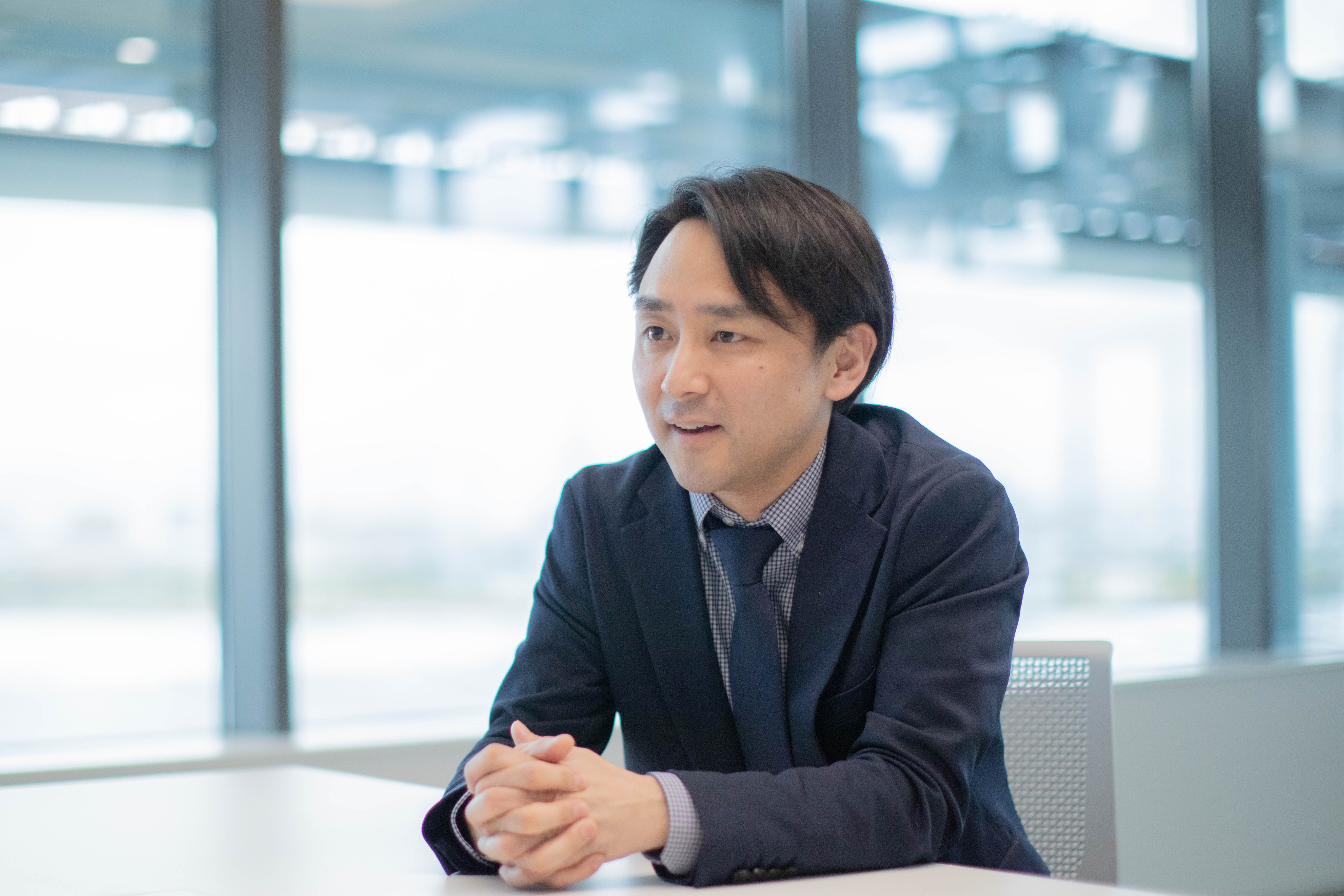
Shuji Furui
Senior Engineer, Technology Innovation Center
Born in Wakayama Prefecture and joined the company in 2005. He is in charge of energy management and demand technology development.
With energy optimization technology as our focus, we aim to achieve carbon neutrality and create value in smart cities for regional branding.
Senior Engineer, Technology Innovation Center
Born in Wakayama Prefecture and joined the company in 2005. He is in charge of energy management and demand technology development.
With energy optimization technology as our focus, we aim to achieve carbon neutrality and create value in smart cities for regional branding.
Related article
FEATURE
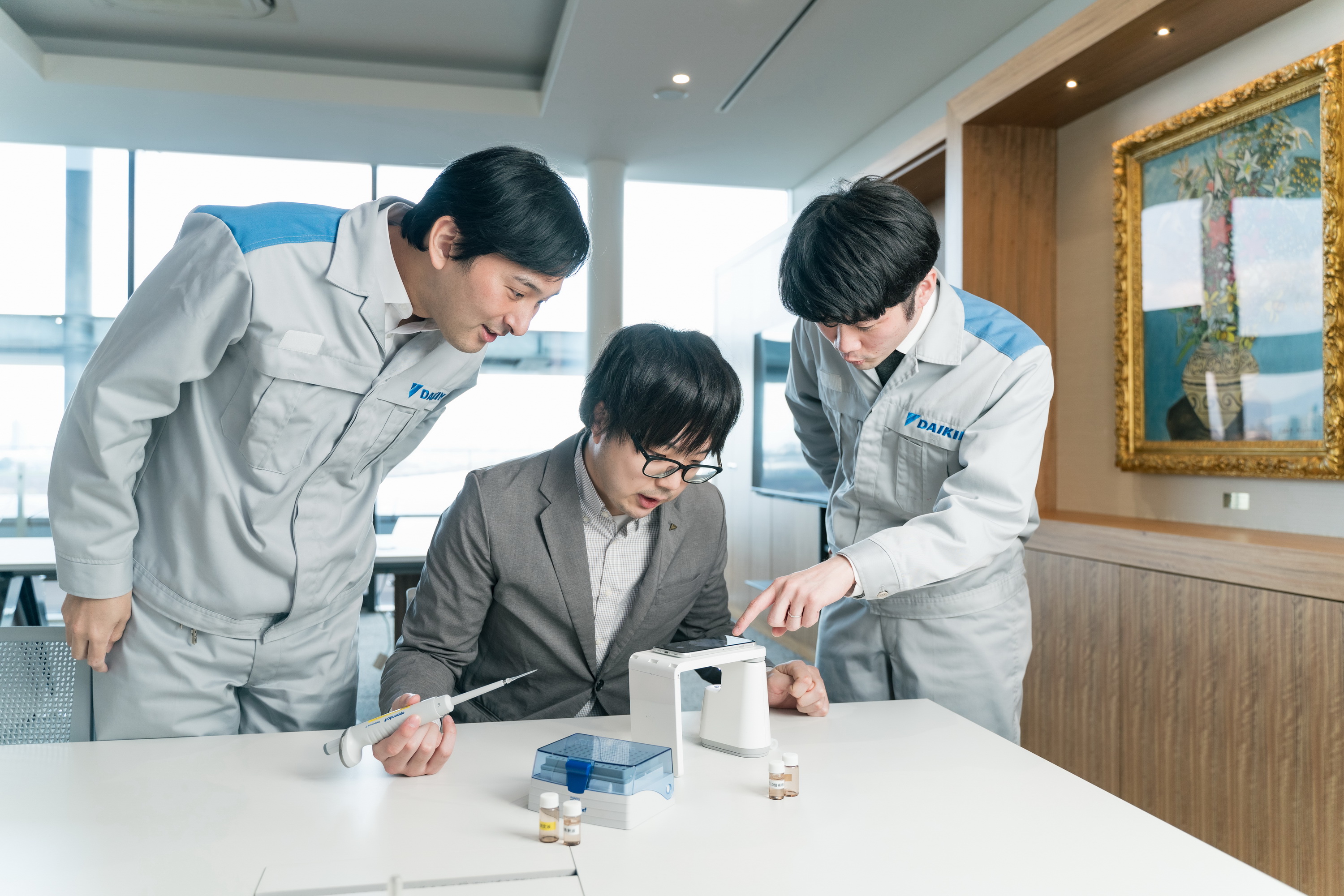
Mold Image Analysis Technology for Maintaining AC Cleanliness: Remembering the Start of Kirei Check
2023.04.25
FEATURE
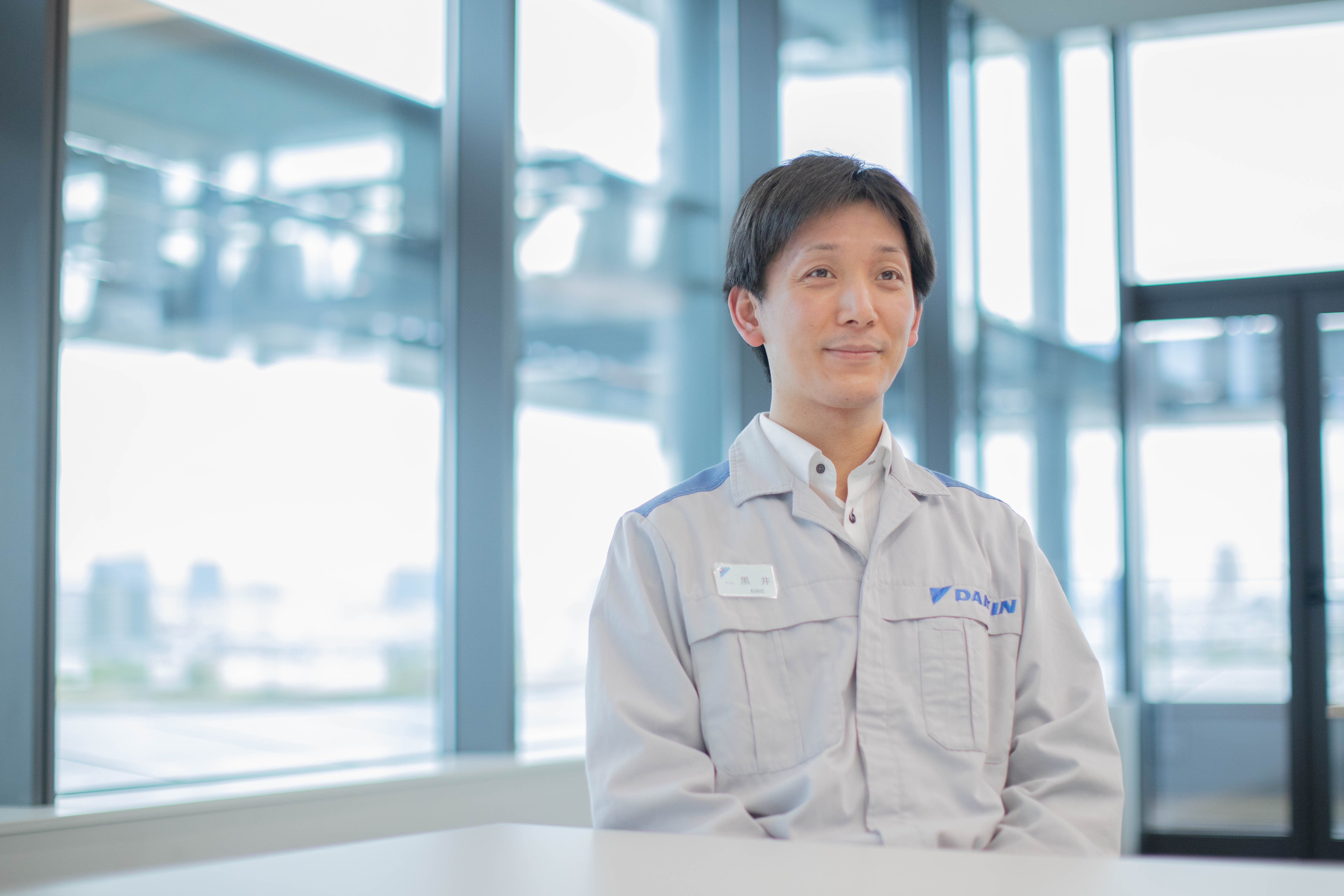
Daikin Air Conditioning and Epidemic Mitigation: Indoor Air Quality (IAQ) Efforts from Pollen to COVID-19
2023.02.01
FEATURE
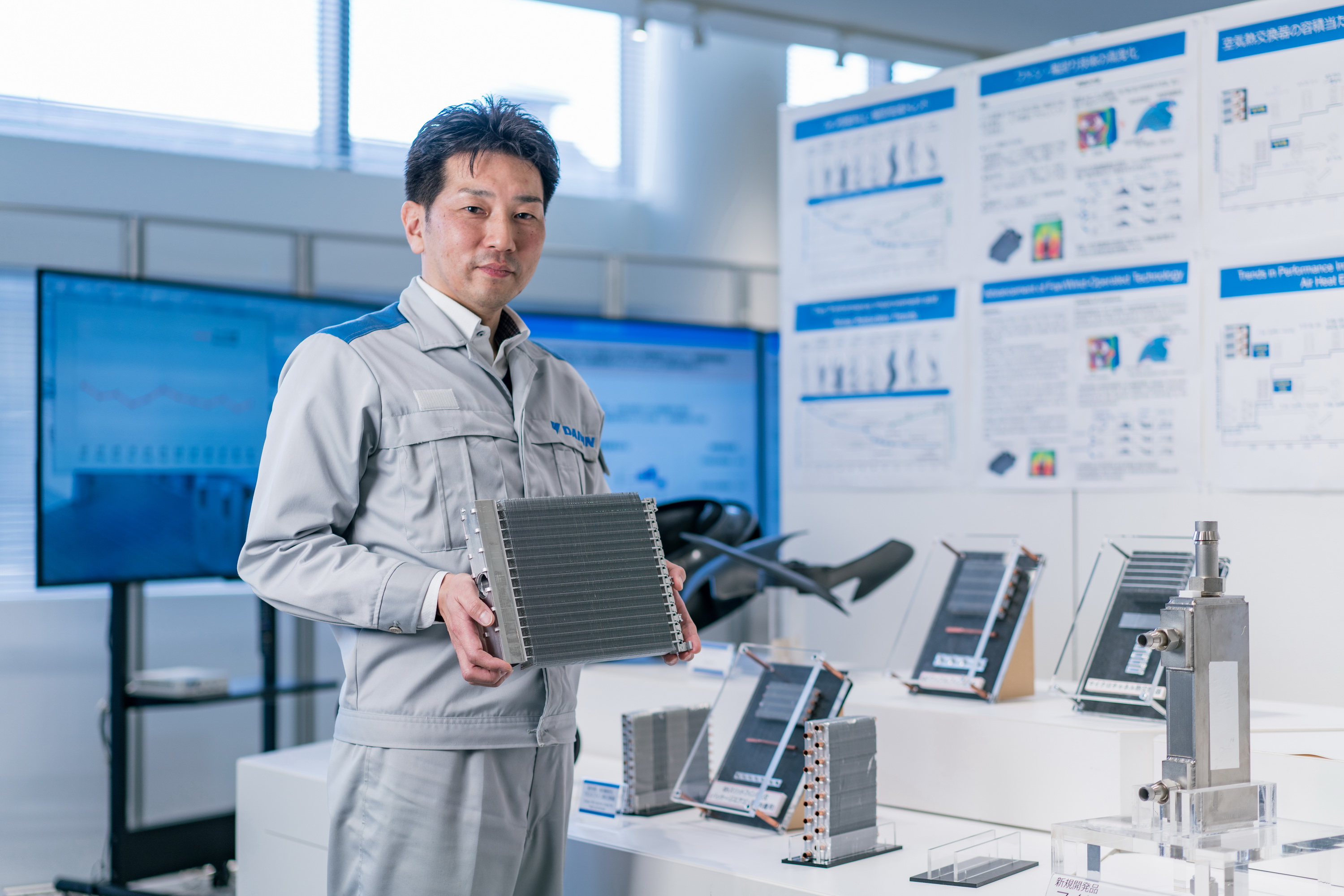
Daikin Succeeds in World’s First All-Aluminum Microchannel Heat Exchanger Overcomes technological standstill to reach new plateau in thermal efficiency
2023.05.23






